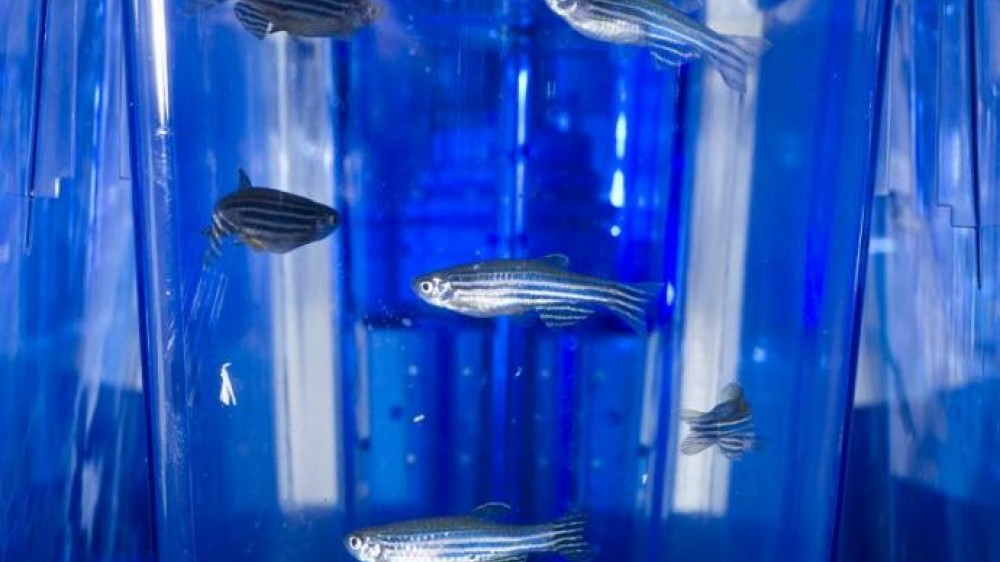Five reasons why zebrafish make excellent research models

Dr Caroline Brennan, from Queen Mary University of London, tells the NC3Rs the top five reasons why zebrafish are her model of choice.
When using animals in research, it is important to minimise animal suffering by using the least sentient organism possible to answer the question at hand. But, there are also purely scientific reasons why ‘lower’ organisms, such as zebrafish, can create a better model system. Some of these reasons are outlined below:
1. Genetic similarity to humans
Zebrafish are vertebrates and therefore share a high degree of sequence and functional homology with mammals, including humans. Due to the conservation of cell biological and developmental processes across all vertebrates, studies in fish can give great insight into human disease processes. For example, to date all proteins studied have a similar function in fish and mammals.
2. Easier to house and care for than rodents
Due to their small size and the relatively simple nature of their natural environment, it is easier to keep zebrafish in what appear to be more natural conditions than it is possible to simulate for mammals. This minimises housing stress and the impact such stress may have on the outcome of experiments. Not only does this add to the refinement of animal usage, it also minimises the number of animals that need to be used because it reduces the between subject variation that can be caused by stress.
3.Impact of any genetic mutation or drug treatment is easy to see
Zebrafish embryos and larvae are completely transparent, meaning that it is possible to follow the impact of a genetic manipulation or pharmacological treatment using non-invasive imaging techniques. Less intrusive techniques minimise animal suffering. The invasive procedures avoided not only impact on welfare, but may also affect the experimental outcome, so the transparent nature of zebrafish larvae could also mean results are more accurate and easier to reproduce.
4. Lots of offspring
Ensuring a ready supply of animals for research is also easier with zebrafish. Zebrafish have a much larger number of offspring in each generation than rodents. Rodents have 5-10 offspring per pairing, in comparison to the 200-300 obtained from fish. Zebrafish offspring also grow and develop very quickly.
5. Easier to introduce genetic changes
Zebrafish embryos are able to absorb chemicals that have been added to their water, meaning it is easy to introduce changes to their genes using nothing more than chemical mutagens. Zebrafish are able to withstand much higher levels of chemical mutagens than can be tolerated by rodents so it is possible to induce a much higher density of mutations in their genome.
How do the benefits of using a zebrafish model apply to genetic research?
Despite the growing interest in ‘big data’ approaches to studying the genetics of human disease, currently there is still a need to work in animal model systems. For many, zebrafish are becoming an increasingly popular choice of model.
Biomedical researchers are taking advantage of the vast amount of genetic information available in public databases, and in medical records, to explore the causes of human disease and gain insight to help the development of novel, as well as personalised, treatments. But this approach does have its limitations. As the name suggests, human genome wide association studies (GWAS), can only show a statistical association between a particular genetic variant and a given disease.
For the majority of human diseases, genetic variations that associate with disease are of very minor effect, meaning that vast amounts of sequencing data are required before one can assign statistical significance to an association, which is hugely time consuming and expensive. Alternatively, these variants may occur in only a very small proportion of the population, since any deleterious genetic variant of major effect will have been selected against during evolution, or the variant may be recently occurring and thus not present in many individuals.
Add to this the wide range of environmental conditions that may impact on the disease occurrence, and the reluctance of individuals to be subjected to breeding schemes, and you can see why identification of disease causing alleles from human studies is problematic, despite vast amounts of sequence data.
Forward genetic mutagenesis studies in animal models can avoid these issues. Random mutations are introduced into the genome and the offspring are screened for the phenotype of interest. As the animals are reared in a controlled environment, variation due to environment is minimised. Also, mutations induced by mutagenesis do not have time to be selected against and thus give rise to stronger phenotypes that are far easier to map.
Assuming that the exact mutation does not occur in humans, it is still likely that any variant in a gene that shows a strong phenotype in animal studies will contribute to the disease phenotype in humans. Therefore, animal mutagenesis studies can direct the human research. Although possible in rodents, forward genetic screening is far easier in zebrafish and, as highlighted above, there is a strong scientific and moral case for the zebrafish model.
